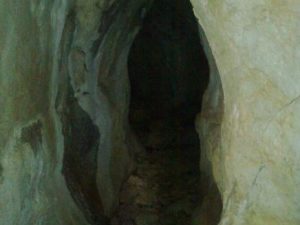

The Archaeological Museum of Veliko Tirnovo is there to show us the the millenary history and culture of the region Veliko Tirnovo. The Museum owns exhibits from ancient times to the late Middle Ages. There you may see pottery, tools and weapons found in Thracian settlements dating from the years 5800 before Chr. The most interesting is the is the exhibit telling us about Tirnovgrad as the medieval capital of Bulgaria. You can see here the unique gold rings, jewelry, stamps and coins with images of Bulgarian rulers.
The first room of the museum presents the development of life in the villages of this region. The pottery, tools, weapons, idol figurines and more are of interest. They were found in the mound of Samovodene village, Kachitsa region in Veliko Tirnovo, in Djulyunitsa, in the mound near the village Hotnitsa, near the Hotnitsa Waterfall and in the Thracian settlement on Tsarevets Hill. The oldest exhibits date back to 5800 in. Hr.
There are many unique exhibits – Neolithic pottery with pre-written system, Neolithic gold treasure in the village Hotnitsa, Chalcolithic gold jewelry in the cave near the village of Emen, characters, four treasures of tools and weapons from Bronze Age and discoveries of Thracian Eastern tomb.
The exhibition in the second hall depicts the history of the city in the ancient centers, in military centers and those economical and their place in the history of economic and cultural patrimony of Bulgaria. The urban center Nikopolis ad Istrum Roman, the Nove Roman military camp near the town of Svishtov, art production centers, ceramic center in the town of Pavlikeni, Butovo, Hotnitsa, White Church, and Diskoduratere Peritenzium markets, early Byzantine town situated on the hills and Momina Fortress. The greatest interest represents the collection of pottery and molds from II – IV senturies of the New Age, votive plates with images of ancient Greek, Thracian and Roman deities, bronze sculpture, gems and the cameos made of precious and semiprecious stones, jewelry, etc.
The culture of the Age, when Tarnovgrad was the capital of medieval Bulgaria (XII – XIVth) is shown in third hall – gold and lead seals, royal correspondence, gold rings, high rank seals, coins with Bulgarian officials faces, jewelry, weapons, architecture and ceramic construction details, crafts, ceramic collection, eastern and western elements which appeared due to commercial relationships, literary monuments, samples of the School of painting in the town of Tirnovo etc.


